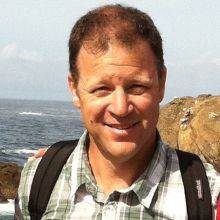CEE Seminar: Shorelines from Space – Assessing California’s Changing Coast with Remote Sensing

Research Geologist
Pacific Coastal and Marine Science Center
U.S. Geological Survey
Santa Cruz, California
Abstract: The shoreline is one of the most dynamic settings on Earth because waves, tides and winds are continually moving water and sediment and eroding rocky coasts. These changes are especially prevalent along the California shoreline, where large winter storms and an eroding coast provide significant management and engineering challenges. This presentation will focus on the application of remote sensing technologies to develop new understanding about coastal change along California, including some recent surprises such as how upland wildfires influence shoreline change, the irregularity of seasonal shoreline patterns, and the footprint of humans on these coastal systems.
Bio: Jonathan Warrick is a research geologist at the U.S. Geological Survey (USGS) in Santa Cruz, California. His research focuses on coastal change and the movement of sediment from rivers to the sea. Warrick has led efforts to characterize the outcomes of the massive dam removal project on the Elwha River of Washington in collaboration with tribal, federal, state and local partners. He is currently leading the USGS Remote Sensing Coastal Change project, which has collected and evaluated remote sensing data to better understand changes to U.S. coasts from wildfires, floods, landslides, hurricanes and other storm events.
Share
Upcoming Events
-
EECS Seminar: Random Thoughts After More Than 60 years in the Trenches
-
MAE 298 Seminar: Machine Learning Acceleration of Turbulent Combustion and Nonequilibrium Flow Predictions
-
CBE 298: Green Steel: Design, Supply Chain, H2 Storage and Dispatch Strategies
-
MSE Special Seminar: Iron-ing out the Details - Microbial Transformations of Earth’s Most Abundant Element
-
MSE 298 Seminar: Intelligent Learning Strategies for Thermal Science in the AI Era
